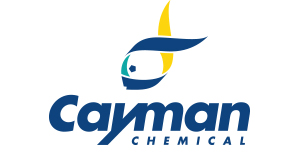Quinolinic Acid, CAS 89-00-9
Quinolinic Acid, CAS 89-00-9
Artikelnummer
CAY14941-50
Verpackungseinheit
50 g
Hersteller
Cayman Chemical
Verfügbarkeit:
wird geladen...
Preis wird geladen...
Shelf life (days): 1460.0
Formulation: A crystalline solid
Formal Name: 2,3-pyridinedicarboxylic acid
Purity: ≥98%
Formula Markup: C7H5NO4
Formula Weight: 167.1
CAS Number: 89-00-9
Notes: Quinolinic acid is an active metabolite of tryptophan (Item Nos. 29600 / 31210) and an NMDA receptor agonist.{23856,51251} It is formed from tryptophan via the kynurenine pathway.{23856} Quinolinic acid (100 µM) induces lipid peroxidation in rat brain synaptosomes, an effect that can be reversed by the NMDA receptor antagonist 2-amino-5-phosphonovaleric acid.{24465} It decreases the viability of primary rat neurons when used at a concentration of 25 µM.{38621} Intracerebroventricular administration of quinolinic acid (1 µg/animal) induces convulsions in mice.{51252} Increased plasma levels of quinolinic acid negatively correlate with Brief Neurocognitive Assessment (BNA) scores in patients with schizophrenia.{51253}
Formulation: A crystalline solid
Formal Name: 2,3-pyridinedicarboxylic acid
Purity: ≥98%
Formula Markup: C7H5NO4
Formula Weight: 167.1
CAS Number: 89-00-9
Notes: Quinolinic acid is an active metabolite of tryptophan (Item Nos. 29600 / 31210) and an NMDA receptor agonist.{23856,51251} It is formed from tryptophan via the kynurenine pathway.{23856} Quinolinic acid (100 µM) induces lipid peroxidation in rat brain synaptosomes, an effect that can be reversed by the NMDA receptor antagonist 2-amino-5-phosphonovaleric acid.{24465} It decreases the viability of primary rat neurons when used at a concentration of 25 µM.{38621} Intracerebroventricular administration of quinolinic acid (1 µg/animal) induces convulsions in mice.{51252} Increased plasma levels of quinolinic acid negatively correlate with Brief Neurocognitive Assessment (BNA) scores in patients with schizophrenia.{51253}

 English
English










